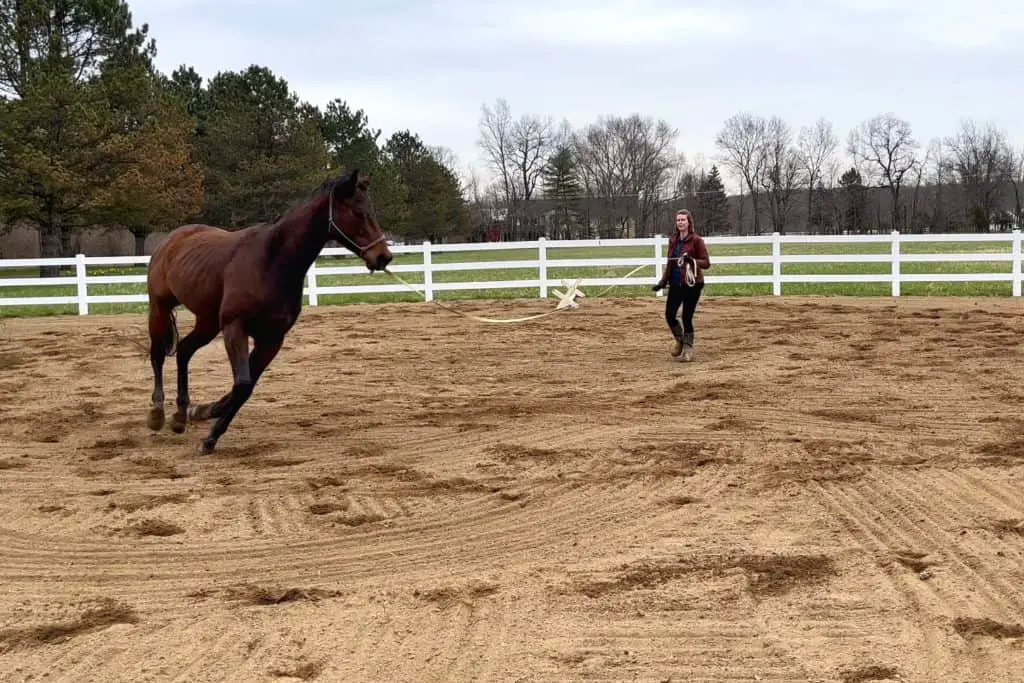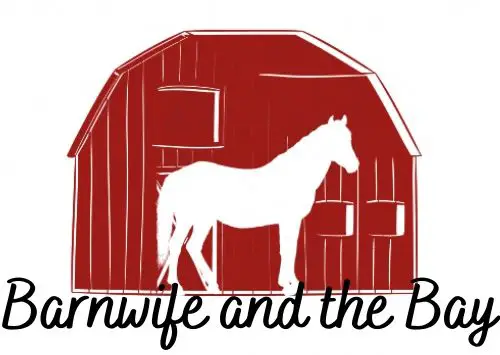
My husband and I recently attended a marriage conference where the keynote speaker emphasized the concept “Speak in such a way that your spouse wants to listen to you, and listen in such a way that your spouse wants to speak to you”. This is an important principal to practice in order for our marriages to thrive. But it struck me that this is a great way to express how we should be approaching our horses as well. It puts the emphasis on the horse as the most valued stakeholder in the communication exchange. It puts the responsibility on the handler to both “speak” and “listen” in a way the horse understands and accepts.
“Speak in such a way that your horse wants to listen to you, and listen in such a way that your horse wants to speak to you”
The reality is that it is our responsibility to tailor our communication to our horses, not the other way around. First we must establish an effective communication flow based on valuing their point of view. Then we can begin to expect them to take more responsibility for acting like partners, based on what we have taught them. Always only adding more responsibility when they are ready for it.
Speak in a way that your horse wants to listen
Another great quote that I think is so applicable to the way we should be present with our horses is from a management expert and corporate consultant, Mark Horstman, who pulled the idea from a 1970s book on management by Peter Drucker. The quote is “communication is what the listener does”. It means that no matter how clear you as a speaker think you are being, your communication is always interpreted by the listener through their personal lens. Those wishing to communicate effectively should always strive to understand those they wish to communicate with. They will then formulate their communication with reference to that and not necessarily with reference to what would make sense to themselves.
“Communication is what the listener does”
Mark Horstman, paraphrasing Peter drucker
If communication is what the listener does, how in the world do we know what to “say” to our horses to get our message across in a way they will understand?
It’s not necessarily as hard as it sounds. Horses have a natural language, the language of the herd, that we can learn to speak. Horses can also be taught other highly expressive languages.
When learning these languages ourselves, we must always keep in mind the basic underlying mindset of a horse as a prey animal. But we also need to open our minds to possibilities beyond the predator-prey dichotomy. It’s clear that horses have the ability to rise far above the behaviors of a simple prey animal.
Every horse is an individual
The Bay is an extremely willing and easy-to-train horse. I use traditional pressure-release methods and try to incorporate lots of natural horsemanship ideas (the language of the herd that she understands from early experience). I avoid punishing her. Allowing a disapproving attitude to flow from my body is enough to communicate that she’s given me a wrong answer. Also, redirecting her to a behavior she knows well when I see a wrong answer about to occur is very helpful.
But sometimes, it takes some trial and error to find an effective way to communicate. The Bay is very sensitive (I can understand this, as I’m sensitive too. Shoutout to the Sensitives). Like most horses, she is very in tune with the energy in a space. In addition, while she really enjoys things that feel good, she doesn’t enjoy things that don’t feel good to her (understandable!). She is skeptical of most things that come near to touch her. This includes saddle pads, fly spray, hose water, and plastic bags. She usually doesn’t react in a big physical way, just simply tries to leave and avoid being touched.
Finding the right way
At first, I approached this as an exercise in “desensitization”, or confidence building. I wanted to show her I saw how anxious she was about these touching things, and reassure her it was ok. I used a rather detailed version of the approach and retreat method for doing this.
The idea is to let the scary thing approach until you see a small change in the horse indicating increasing stress. This could be an eye movement, turning their head away, leaning away. Then you take the thing back to a safe distance. This shows the horse that you are in tune with their subtle cues, and you are interested in keeping them safe. If done right, it should build the horse’s trust in the handler and confidence toward the scary thing. Instead, The Bay and I would spend up to an hour looking like 2 of those inflatable clowns with the weighted bottoms, wobbling in parallel.
I’d lean toward her with the saddle pad, and she’d lean away, so I’d lean away to release her from the pressure and show that I saw her anxiety. Absolutely no change in her behavior toward the saddle pad.
Finally I realized that she may not be afraid of these things, she may simply expect that they won’t feel good when they touch her.
I changed my approach. I decided to link the presence of things that will touch her with something she definitely likes. Filling my pockets with treats, I calmed my mind and body, and steadily brought the saddle pad toward her. All the time the saddle pad was coming near and going on her, I fed her treats. I could begin to see a change in her mindset about the saddle pad after only a couple of rides.
Listen in such a way that your horse wants to speak to you
Learning to listen to horses is a crucial factor in a successful horse-human relationship. It’s so easy to get caught up in what we want our horse to understand that we forget that they are always trying to share with us.
For me, the listening part is even tougher than the speaking part. Listening well to a horse requires immense concentration, and being totally present in the moment. It also requires deep knowledge of the way horses try to show us their feelings. This can feel very foreign to a spoken-language-focused human. I have to remind myself to first simply describe what is occurring in neutral language, without judgement. Then explore what it could mean.
But it is so cool when you can show a horse you’re listening, and they respond!
With The Bay I’ve gotten really excited about ground work, because from the ground it’s easy to read her facial expression, and see how she’s expressing herself about what she’s learning with her body. I can see in her whole body how she is responding to what I’m telling her with my body language.

I love doing ground work with The Bay
The more we listen to horses, and show them we are listening, the more they will tell us. This is a concept I learned from Warwick Schiller, an Australian-American horse (and human) trainer (who has tons of free content, clinics, and paid video library).
“Relationship before horsemanship”
WArwick Schiller
I’m still exploring this concept, trying to find ways to let The Bay know I “hear” her, and answering her “questions” in ways that give her the right amount of responsibility.
A bit of inspiration
In our quest to communicate well with our horses, we can be inspired by God’s patient, relentless pursuit of us. He has rich life to communicate to us, and if we accept Him He will spend the rest of our lives shaping us. We should be inspired to be dedicated to pursuing our horses to shape them into all they can be.
Not only does God try to speak to us, He went so far as to actually become one of us. And He left the history of His life and death for humans in written words we can now read in many, many human languages. He is the ultimate example for speaking in ways that other species will listen to, and we can strive to imitate Him in this, as in everything else we do.
Like this? Want more? Jump into these too!
